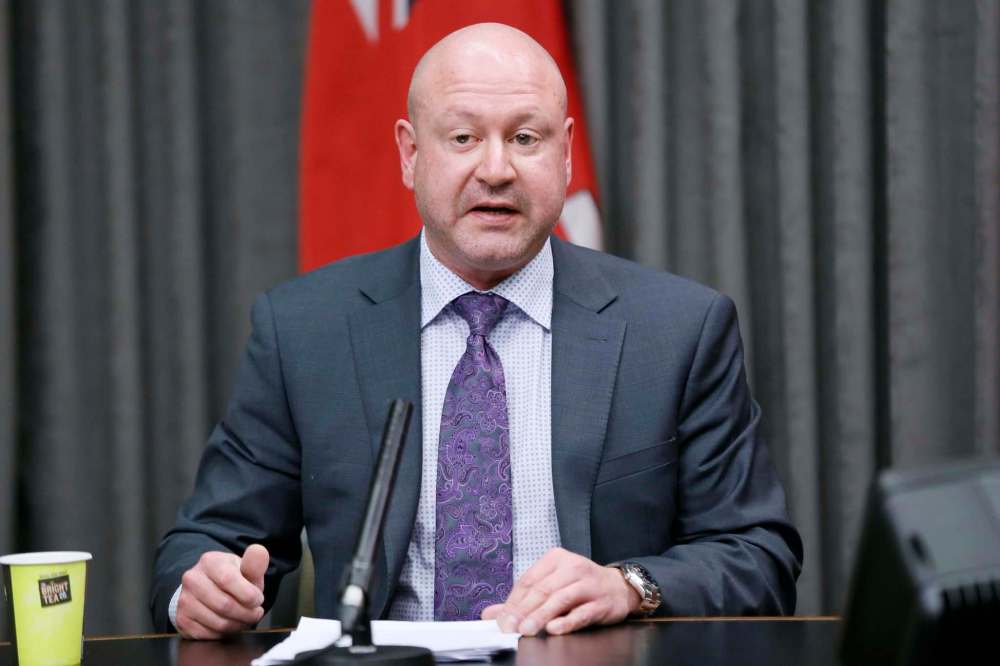Manitobans can handle the COVID-19 math
Read this article for free:
or
Already have an account? Log in here »
To continue reading, please subscribe:
Monthly Digital Subscription
$0 for the first 4 weeks*
- Enjoy unlimited reading on winnipegfreepress.com
- Read the E-Edition, our digital replica newspaper
- Access News Break, our award-winning app
- Play interactive puzzles
*No charge for 4 weeks then price increases to the regular rate of $19.00 plus GST every four weeks. Offer available to new and qualified returning subscribers only. Cancel any time.
Monthly Digital Subscription
$4.75/week*
- Enjoy unlimited reading on winnipegfreepress.com
- Read the E-Edition, our digital replica newspaper
- Access News Break, our award-winning app
- Play interactive puzzles
*Billed as $19 plus GST every four weeks. Cancel any time.
To continue reading, please subscribe:
Add Free Press access to your Brandon Sun subscription for only an additional
$1 for the first 4 weeks*
*Your next subscription payment will increase by $1.00 and you will be charged $16.99 plus GST for four weeks. After four weeks, your payment will increase to $23.99 plus GST every four weeks.
Read unlimited articles for free today:
or
Already have an account? Log in here »
Hey there, time traveller!
This article was published 24/04/2020 (2058 days ago), so information in it may no longer be current.
The most memorable moment in the 1992 courtroom drama A Few Good Men involves hard-boiled U.S. Marine commander Nathan Jessup (played by Jack Nicholson) offering a furiously condescending response to a military prosecutor’s demand for a truthful answer to a direct question.
“You can’t handle the truth!” he seethes.
While no right-minded person would ever compare the fictional Col. Jessup (or, for that matter, the Oscar-winning Mr. Nicholson) to Manitoba’s real-life chief public health officer, Dr. Brent Roussin, there is a recurring theme in the province’s daily COVID-19 briefings that has faint echoes of that film’s pivotal moment, in that it has left the impression there are aspects of the truth Dr. Roussin doesn’t think Manitobans are equipped to handle.
Specifically at issue is his continuing reluctance, despite weeks of repeated questions from local media, to disclose in any detail the COVID-19-related statistical modelling that has informed the province’s pandemic-response strategy.

While other provinces have been forthcoming with their statistical models, Manitoba’s daily briefings have included no such information as Dr. Roussin, Premier Brian Pallister and anyone else involved in the sessions have steadfastly declined to reveal the numbers in question.
The non-disclosure, Mr. Pallister reiterated this week, is because the models are either not yet complete or too speculative to be useful.
“The facts are what they are,” the premier explained. “The projections are a conjectured guess on where we might be in the future.” He added that projections released recently by Ontario included a variance of 500 per cent in possible COVID-19 caseloads and potential fatalities.
“I would not want it stated — because it would be false to state it — that somehow (not releasing projections) was a lack of transparency. Rather, this is a willingness to be transparent and to be careful about being accurate in the numbers we give you.”
This rationale might be easier to accept if it applied to all fields of endeavour in which modelling and projections are employed. But the province routinely releases flood forecasts, despite knowing spring river levels in Manitoba can vary wildly depending on a number of factors.
“The facts are what they are. The projections are a conjectured guess on where we might be in the future.” – Premier Brian Pallister
Even the province’s annual budget — the release of which is a cherished legislative tradition involving no shortage of proud posturing on the part of the government in power — is largely a speculative document based on fiscal projections that can be easily rendered inaccurate by unforeseen events (such as a pandemic).
Those models, however, are released without hesitation. Which leaves one wondering what makes COVID-19 projections a unique brand of information for which Manitobans are somehow unprepared.
The most skeptical of observers might be inclined to connect the dots between two aspects of the COVID-19 crisis in which Manitoba remains an outlier — the reluctance to release models and projections, and a strategic response which has favoured austerity and preserving the province’s bottom line over spending to prime the pumps of a stalled and declining economy.
Mr. Pallister has said the decision to release (or not) modelling and projections is Dr. Roussin’s alone — which should be interpreted as a tacit assurance by the premier that political expediency has played no part in the decision not to disclose COVID-19 modelling.
That’s a truth Manitobans would most certainly embrace. As for the statistical models that underpin the province’s strategy and would usefully reinforce for Manitobans the importance of their behaviour during a pandemic … well, those are numerical assertions we could also quite capably handle.










